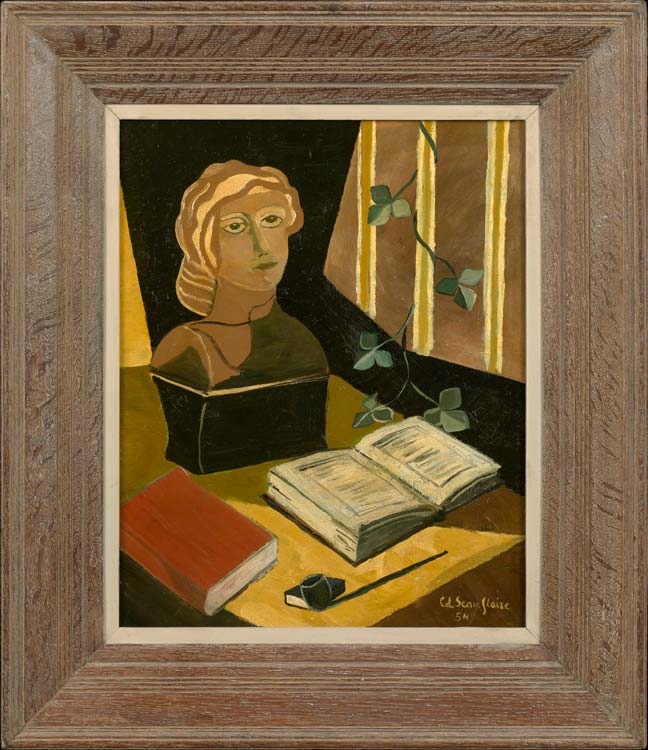The artist’s table is related to other still life paintings by Scauflaire, such as Harlequin at the table, and Still life with three oranges. All three works share with still life paintings by Braque the representation of objects on a table within a carefully depicted interior; both artists reproduce details such as wallpaper, plants, statues and books, fruit, pipes, pitchers and plates. Scauflaire’s style is not so radically cubist as Braque’s, and he retains the simplified curving forms of Picasso’s nudes for figures and statues. The result, as here, is less the attempt to portray objects from different angles and through time, but rather to present a contemporary symbolism, touched with the brooding significance we see in De Chirico’s work.
Biographical details
Edgar Scauflaire (1893-1960) was born in Liége, and studied at the Académie des Beaux-Arts there, under teachers such as Auguste Donnay, Adrien de Witte, Francois Maréchal and Emile Berchmans. He came under the influence of Picasso and Braque; his nudes have a strong similarity to Picasso’s monumental nudes of the 1920s, whilst his still life paintings are related to those of Braque. However, his work never degenerates into copying nor pastiche; and his pastels have a particular charm in their technique and colouring. As well as paintings, pastels and murals, he produced tapestries, frescoes and paintings on glass; he also created artwork for posters, such as that for the 1939 Expo Universelle in Liége.
In 1948 he exhibited work at the Salon d’Art Moderne et Contemporain in Liége which was greatly praised. He showed at the Biennials in Venice (1924, 1938, 1948), those of Sao Paolo (1951 & 1953), and Menton (1953), as well as the Salon des Tuilleries and the 1958 Exposition Universelle in Brussels. He was awarded the Prix de l’Association Industrielle de Santa-Margarita Ligure, and helped to found L’Association pour les Progrès Intellectuels et Artistique de la Wallonie.
His work is in the collections of the Belgian State, and the museums of Liége, Verviers and Brussels, Strasbourg and Buenos Aires.


